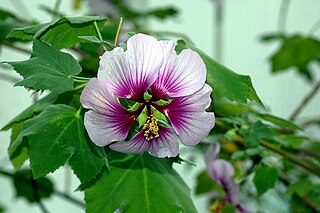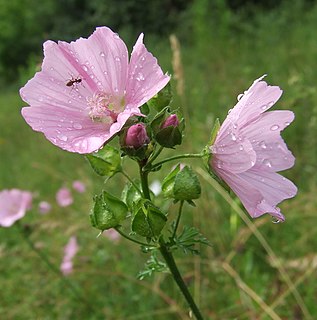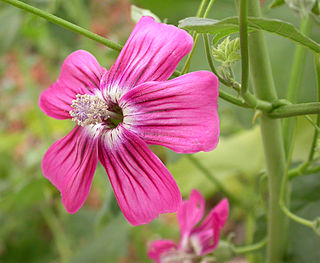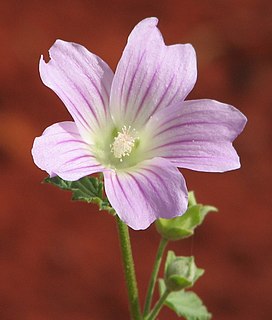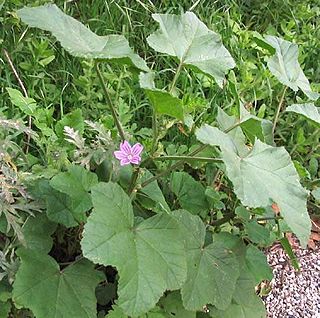Common mallow is a common name used for a number of different species of Malva :
In biology, a common name of a taxon or organism is a name that is based on the normal language of everyday life; this kind of name is often contrasted with the scientific name for the same organism, which is Latinized. A common name is sometimes frequently used, but that is by no means always the case.

Malva is a genus of about 25–30 species of herbaceous annual, biennial, and perennial plants in the family Malvaceae, one of several closely related genera in the family to bear the common English name mallow. The genus is widespread throughout the temperate, subtropical and tropical regions of Africa, Asia and Europe.
- Malva sylvestris is the common mallow in Europe and North Africa
- Malva neglecta is the common mallow in the United States
- Malva preissiana is a "common mallow" in Australia and New Zealand

Malva sylvestris is a species of the mallow genus Malva in the family of Malvaceae and is considered to be the type species for the genus. Known as common mallow to English-speaking Europeans, it acquired the common names of cheeses, high mallow and tall mallow as it migrated from its native home in Western Europe, North Africa and Asia through the English-speaking world.

Europe is a continent located entirely in the Northern Hemisphere and mostly in the Eastern Hemisphere. It is bordered by the Arctic Ocean to the north, the Atlantic Ocean to the west and the Mediterranean Sea to the south. It comprises the westernmost part of Eurasia.

North Africa is a region encompassing the northern portion of the African continent. There is no singularly accepted scope for the region, and it is sometimes defined as stretching from the Atlantic shores of Morocco in the west, to Egypt's Suez Canal and the Red Sea in the east. Others have limited it to top North-Western countries like Algeria, Morocco, and Tunisia, a region that was known by the French during colonial times as “Afrique du Nord” and is known by all Arabs as the Maghreb. The most commonly accepted definition includes Algeria, Sudan, Morocco, Tunisia, Libya and Egypt, the 6 countries that shape the top North of the African continent. Meanwhile, “North Africa”, particularly when used in the term North Africa and the Middle East, often refers only to the countries of the Maghreb and Libya. Egypt, being also part of the Middle East, is often considered separately, due to being both North African and Middle Eastern at the same time.
| This page is an index of articles on plant species (or higher taxonomic groups) with the same common name (vernacular name). If an internal link led you here, you may wish to edit the linking article so that it links directly to the intended article. |

